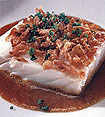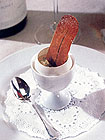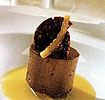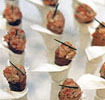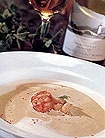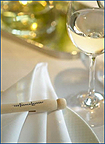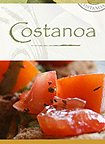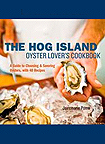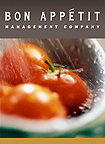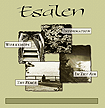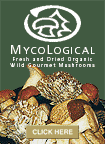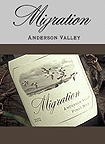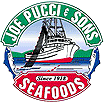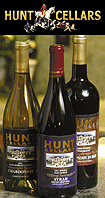|
Chef
Thomas Keller
The
French Laundry,
Yountville CA
|
The
Great Chefs Series
With
Chef Thomas Keller of the French Laundry
By
Ellen
Walsh
Robert
and Margrit Mondavi created another piece to their legacy
this past fall, as they presented their Great Chefs Series
to the public once again. This time it was their Napa
Valley neighbor and friend
Thomas Keller, one of the country's most accomplished
chefs.
Keller shares his techniques, trademarked with
his incredible attention to the smallest detail, with
over
twenty people gathered together to learn how to prepare
life's most treasured bounty-
Lobster
and Foie Gras.
Chef
Thomas Keller Shares Techniques for Cooking and Cleaning
Lobster
It
has been said that you don't own anything until you give
it away. This is especially true of Thomas Keller. Articulate,
exact, and precise, Thomas generously shares with you
his techniques for working with lobster. It is this attention
to detail that has insured Thomas Keller's loyal following
at the acclaimed French Laundry, located in Yountville,
California, a treasure of a destination adjacent to the
well known Napa Valley.
|
Click
on Images for Captions |
Techniques
for Cooking and Cleaning Lobster
(Detailed cooking instructions
excerpted from The French Laundry Cookbook)
Before
we cook lobster we take it out of its shell. Most people
cook lobster in its shell, and once it's cooked there's
nothing you can do to it anymore. By cooking raw lobster
out of its shell you can influence its taste and texture.
What I've been doing since Raquel is cooking the exterior
layer of the flesh, just enough so that it will pull cleanly
away from the shell, leaving the interior raw. This allows
us to treat the lobster as we would raw fish. At Raquel
I used to roast the lobster.
When
I got to the French Laundry, we came up with the technique
of butter poaching, which loads the flavor of butter into
the lobster and cooks it so slowly and gently that the
flesh remains exquisitely tender. so tender some people
think it's not completely cooked.
When
you cook lobster violently, the meat seizes up and becomes
tough, and you can't get anything into it. Gentle heating
is the key to tender, flavorful lobster.
Sometimes
we roast this lobster, and it thus moves into the realm
of meat so we treat it like a meat. We season it with
the squab spice, roast it and serve it with a foie gras
garnish. like the squab.
After
the initial pairing lobster with butter in the cooking
method—what's the point of lobster without butter?—lobster
is then very versatile. Once you make the initial lobster-butter
connection, which takes you back to your very first experience
with, lobster you can put it with so many different garnishes:
beets and leeks, peas and carrots, figs, foie gras.
Preparing
Lobsters for Cooking:
Ingredients:
6 -(1 1/2 to 2 lb.) Lobsters
White Distilled Vinegar (I/2 cup of vinegar to every 8
quarts of water)
All
lobster dishes at the French Laundry begin with this initial
preparation, after which they may be poached in butter,
roasted or chopped for a filling. It's crucial to work
with the lobsters while they are hot, or the fat in the
meat will congeal and make it difficult to remove the
lobster from its shell.
Steeping
the Lobsters:
Place the lobsters into a tight fitting container. Cover
with cold water to determine how much you will need. Drain
off the water, measure it and place the water in a large
pot. Bring the water to a boil and add I/2 cup of white
distilled vinegar to every 8 quarts of water you are using.
After
the vinegar is added, pour the boiling liquid over the
lobsters and let them steep for 2 to 3 minutes (3 minutes
for 2 pound lobsters). Reserving the water, use a pair
of tongs to remove the lobsters, from the water. Place
them on a sheet pan with sides or a board placed over
the sink: it is messy to disassemble the lobsters.
Using a towel or rubber gloves to help hold the hot lobster,
grasp the lobster's tail, twist and pull the tail, to
detach it from the body. Twist and pull the arms to detach
them and return the arms to the hot water for an additional
5 minutes. Reserve the bodies.
For
the Tail:
Hold the tail flat and twist the tail fan to one side:
pull off and discard. Use your fingers to gently push
the meat through the tail end, and pull the meat out through
the large opening. Discard the tail shell. Lay the tail
meat on its back and cut lengthwise through the middle.
Remove the vein running through the top of the meat. Lay
the finished pieces on a sheet pan lined with paper towels.
For
the Claws:
After 5 minutes, remove the arms from the hot water. Twist
off the knuckle to remove it from the claw. Hold a the
claw in your hand and pull down to loosen the lower pincer.
Crack it to each side and pull it straight off. The cartilage
from inside the claw should be attached to the pincer
and the claw meat should remain intact. You may not always
succeed in keeping the claw meat in one piece, but with
practice your success rate will increase.
Still
holding the claw, crack the top of the shell with the
back of a heavy knife blade, about 3/4 inch from the joint
where the knuckle was attached. You want to go through
the shell but not damage the meat. Turn the claw over
and repeat the procedure a second time. Wiggle your knife
to loosen and crack the shell. Pull off the lower section
of the shell.
Shake
the claw to remove the meat (if it doesn't fall out, cut
off the very tip of the claw shell and blow through the
hole to release the meat). Add the claws to the tail meat.
For
the Knuckles:
Cut off the top joint of the knuckle that was attached
to the lobster's body. Use a pair of scissors to cut away
the shell along the smooth outside edge of the knuckle.
Use your fingers to pry open the shell and remove the
meat. Add the knuckle meat to the tails and claws. The
recipes may not always use the knuckle meat. If it is
not called for, enjoy it separately! Cover the lobster
pieces with plastic wrap and refrigerate for up to a day.
For
the Bodies:
Pull back and discard the top shell of the lobster including
the heads and antenna, remove the tomalley (gray), the
roe (deep green), the feathery lungs, and the sack behind
the head. You may want to reserve the tomalley and roe
for other uses (they can be wrapped and frozen separateIy),
but discard the lungs and sack.
You
will be left with the bodies and legs. Rinse them thoroughly
under cold water and use them immediately or freeze them
to make a lobster stock or a consomme.
Links
to more Thomas Keller Recipes:
Braised
Stuffed Pig’s Head with Sauce Gribiche
Bittersweet
Valrhona Chocolate Fondant with Sable Cookie
Broccolini
Salad with Burrata Cheese - (new)
Buttermilk
Biscuits - (new)
Buttermilk
Fried Chicken - (new)
Creamy
Maine Lobster Broth, Russet Potato and Lobster Coral Gnocchi
Foie
Gras Infused Custard with White Wine Poached Anjou Pears
Iceberg
Lettuce Slices with Blue Cheese Dressing, Oven-Roasted
Tomatoes, Bacon, and Brioche Croutons - (new)
Leek
Bread Pudding - (new)
Milk
Poached Wild Turbot with "Foie Gras" and Sweet
Onion "Cracklings" and Foie Gras Emulsion
Nantes
Carrot Stew - (new)
Pig’s
Feet with French Green Lentils
Pork
and Beans
Sautéed
Gulf White Shrimp* with Jasmine Rice, Raisins and Spicy
Shrimp Broth
Scallion
Potato Cakes - (new)
“Surf
and Turf" Pan Roasted “Filet Mignon" of
Veal with a Maine Lobster “Pancake", Clam Shell
Mushrooms and Sauce “Homardine"
Sweet
Butter Braised Maine Lobster with Baby Arrow-leaf Spinach
and a Saffron-Vanilla Sauce
Other
Related Links:
Thomas
Keller: Ad Hoc at Home
Bringing
Home the Bacon
The
Great Chefs Series
Chef
Thomas Keller
Thomas
Keller Joins The Culinary Institute of America Board of
Trustees
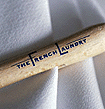
|





